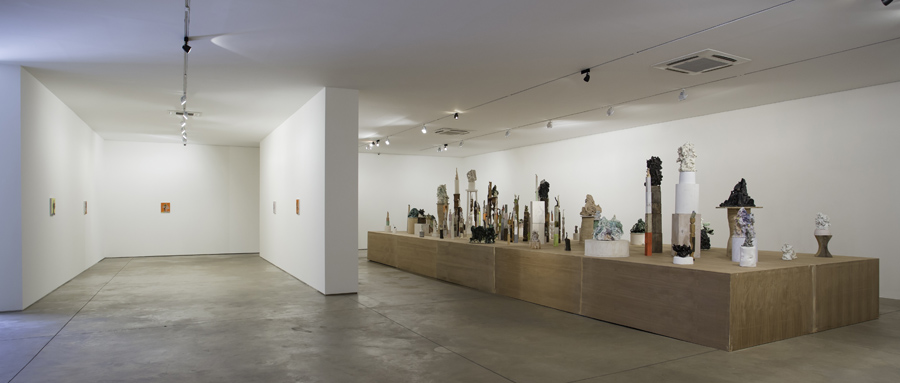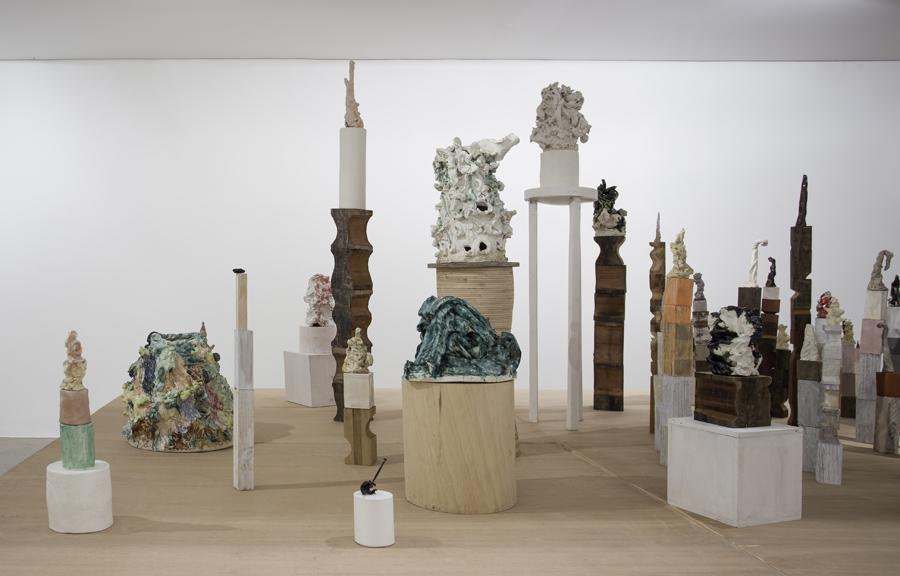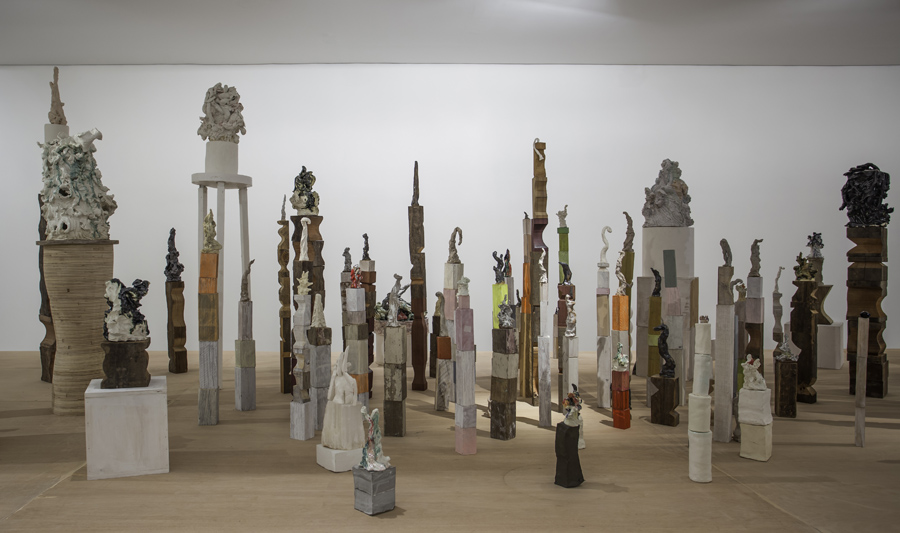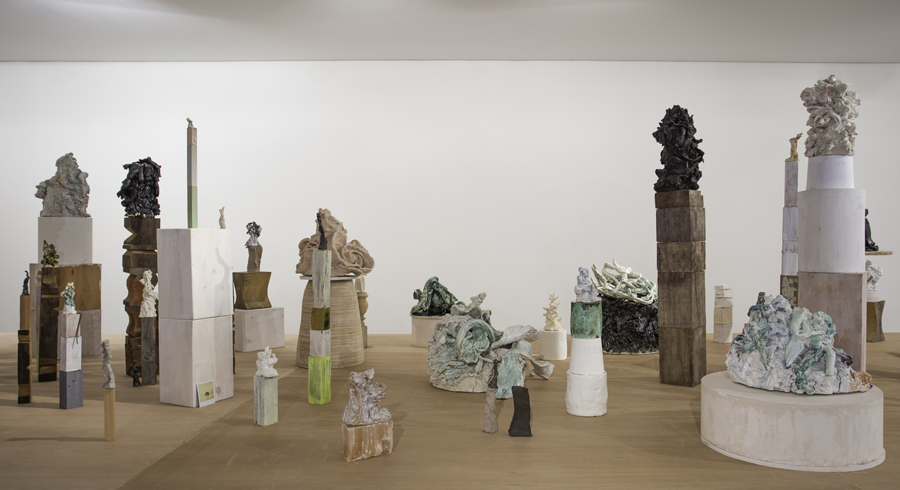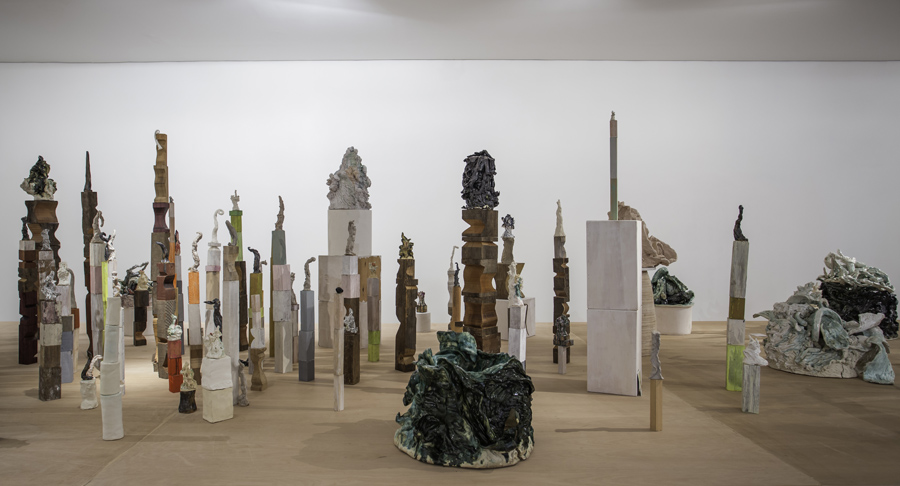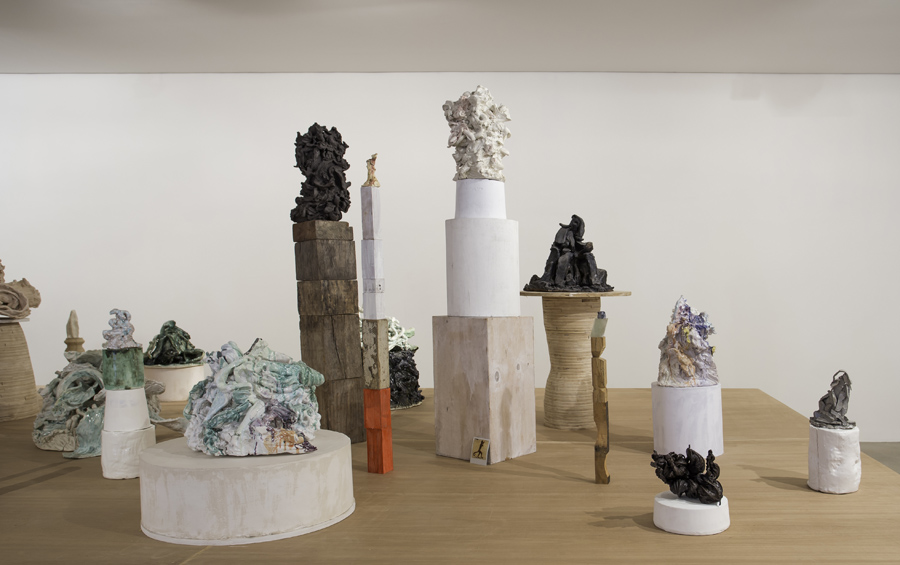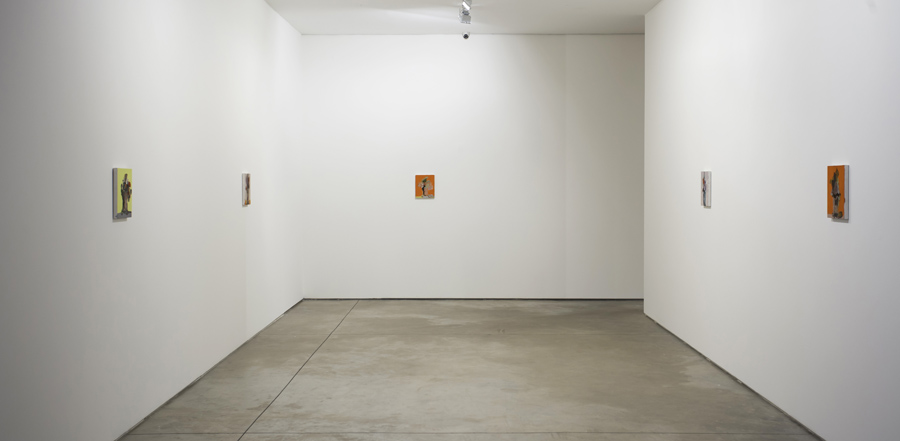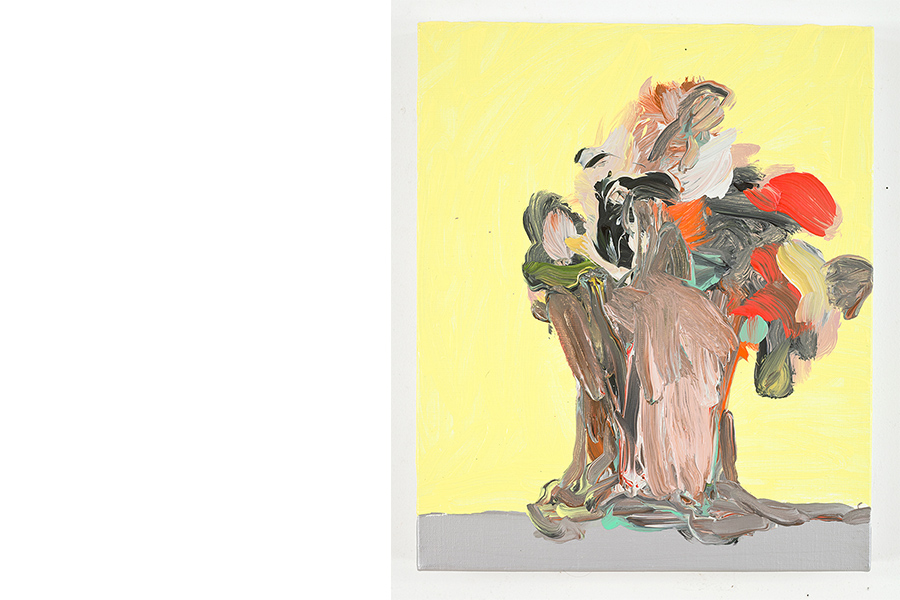galeria marcelo guarnieri | ribeirão preto
abertura/opening
27.08.2016 / 14h – 18h
August 27, 2016 / 2 – 6pm
período de visitação/exhibition
27.08 – 29.10.2016
rua nélio guimarães, 1290
ribeirão preto – sp – brasil / 14025 290
[ mapa/map ]
BICHO SOLTO
por Ronaldo Brito
Essas esculturas acabaram de surgir, seguem ainda às voltas com o seu aparecimento indefinido. Pedem, assim, um olhar rasante, sem se demorar em detalhes, ao acompanhá-las em seu processo de enumeração caótica. Cada uma delas, no ato mesmo de se individualizar, parece trazer todas as outras consigo. Coladas ao mundo da vida contemporânea, elas existem plenamente de passagem. Somos muitos, às vezes somos até demais, mas, prefiro acreditar, queremos todos ser bichos soltos, imaginativos, inassimiláveis. Com ou sem aura, a arte permanece o lugar social das singularidades. Senão, periga virar apenas mais um desses intragáveis truques publicitários a apelar a um patético (ou ridículo) consumo criativo.
À sua maneira prática, intuitiva, as esculturas de Gabriela Machado não deixam de pôr em discussão o estatuto atual do conceito de Objeto. Coisas produzidas com ardor, irrepetíveis, elas seriam, contudo, voláteis em demasia para guardar identidade consistente. Quanto mais crescem e se avolumam, mais se estranham, não cabem em si mesmas, desproporcionais, torcem e se distorcem, em constante metamorfose. Não há como domesticá-las sob um olhar contemplativo. Há, isto sim, que persegui-las em seu andamento sinuoso, em sua manifestação abrupta, que jamais se completa. Também nós, sujeitos incompletos, somos assim levados a uma atitude positiva de ansiedade estética; porque, enfim, não existe mesmo outro jeito, também nós temos que seguir em frente, a lidar com nossa incessante e problemática autotransformação.
Oriundas da pintura, essas esculturas de cerâmica que, de início, saíam para o espaço quase como pinceladas sólidas foram com o tempo ganhando também o gesso e o bronze sem perder a espontaneidade. Não sabem, não podem saber o que são, só o que teimam em vir a ser. O impulso do fazer prevalece sobre o cálculo formal; o seu ideal consistiria talvez em eludir todo e qualquer aspecto definitivo. Daí o modo coerente como se apresentam em exposição – dispostas meio aleatoriamente sobre uma mesa comprida, em bases provisórias, que pertencem e não pertencem às esculturas. Ora falam, conversam à vontade entre si, ora se distanciam, isoladas em sua unidade formal particular. Já não ostentam, é evidente, a solidão heróica das figuras clássicas de Giacometti e sua incomunicabilidade existencialista. Mas tampouco se rebaixam a ícones banais da prolixa indústria de arte contemporânea. Atendem a outra demanda, menos conspícua, menos comunicacional: potencialmente, atuam sobre imaginários independentes, procuram atrair percepções estéticas atentas e qualificadas, alheias a destinações prévias.
LOOSE ANIMAL
by Ronaldo Brito
These sculptures have just come up, they carry on still tied up with their indefinite emergence. Thus, they ask for a glance, without lingering on details, when following their process of chaotic enumeration. Each of them, in the very act of individualizing, seems to involve all others. Pasted to the world of contemporary life, they fully exist in transition. We are many, sometimes we are even too much, but, I prefer to believe, we all want to be loose, imaginative, unassimilable animals. With or without aura, art continues to be the social place of singularities. Otherwise, the risk is to turn it into just another one of these unpalatable advertising tricks, to appeal to a pathetic (or ludicrous) creative consumerism.
In their practical and intuitive manner, Gabriela Machado’s sculptures do not forbear from discussing about the current statute of the concept of Object. Things produced ardently, unrepeatable, they would be, however, too much volatile to keep identity stiff. The more they grow and swell, the more they find themselves strange, they are beside themselves, disproportionate, they twist and skew in constant metamorphosis. It is impossible to domesticate them under a contemplative look. It is necessary, indeed, to pursue them in their winding course, in their abrupt manifestation, which is never complete. We, as uncompleted subjects, are therefore lead up to a positive attitude of aesthetical anxiety too; because, after all, there is no escaping anyway, we also have to move on, to deal with our unceasing and troublesome self-transformation.
Coming from painting, these pottery sculptures, which initially went out into the space almost like solid strokes, as time passes were gaining plaster and bronze as well, without losing spontaneity. They do not know, they cannot know what they are, only what they struggle to be. The impetus of making prevails over the formal calculation; its ideal might consist in eluding all and any definite aspect. Hence, the coherent manner they present in exhibition – displayed sort of randomly over a long table, in temporary bases that belong and do not belong to the sculptures. Sometimes they speak, talk at ease to each other, sometimes they take distance, get isolated in their private formal unit. It is clear they no long show off the heroic loneliness of Giacometti’s classic figures and their existentialist incommunicability. But neither they lower themselves to banal icons of the wordy industry of contemporary art. They answer to another demand, less conspicuous, less communicational: potentially, they act on independent imaginaries, they seek to attract heedful and qualified aesthetical perceptions, unknown to previous destinations.


